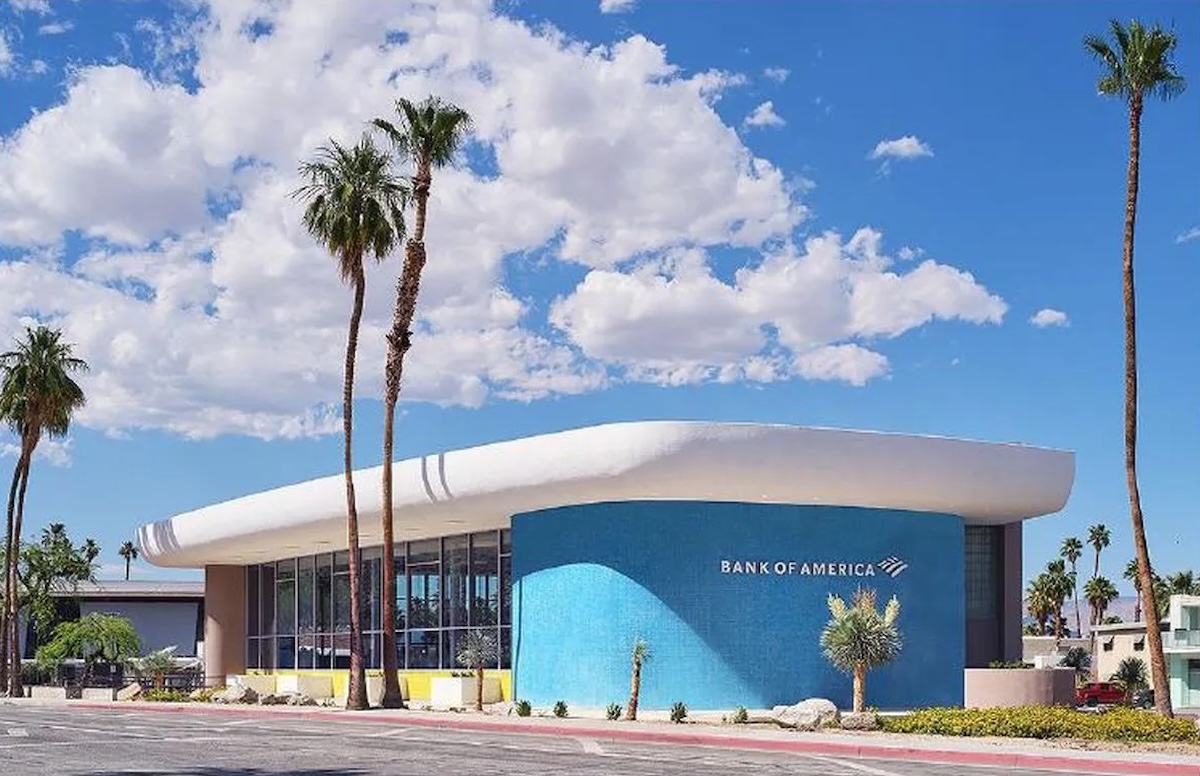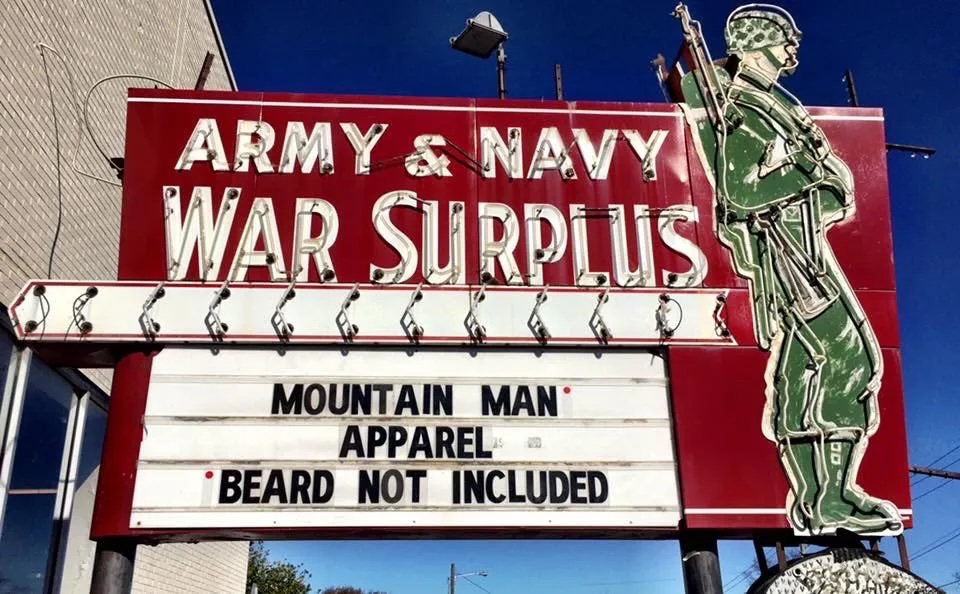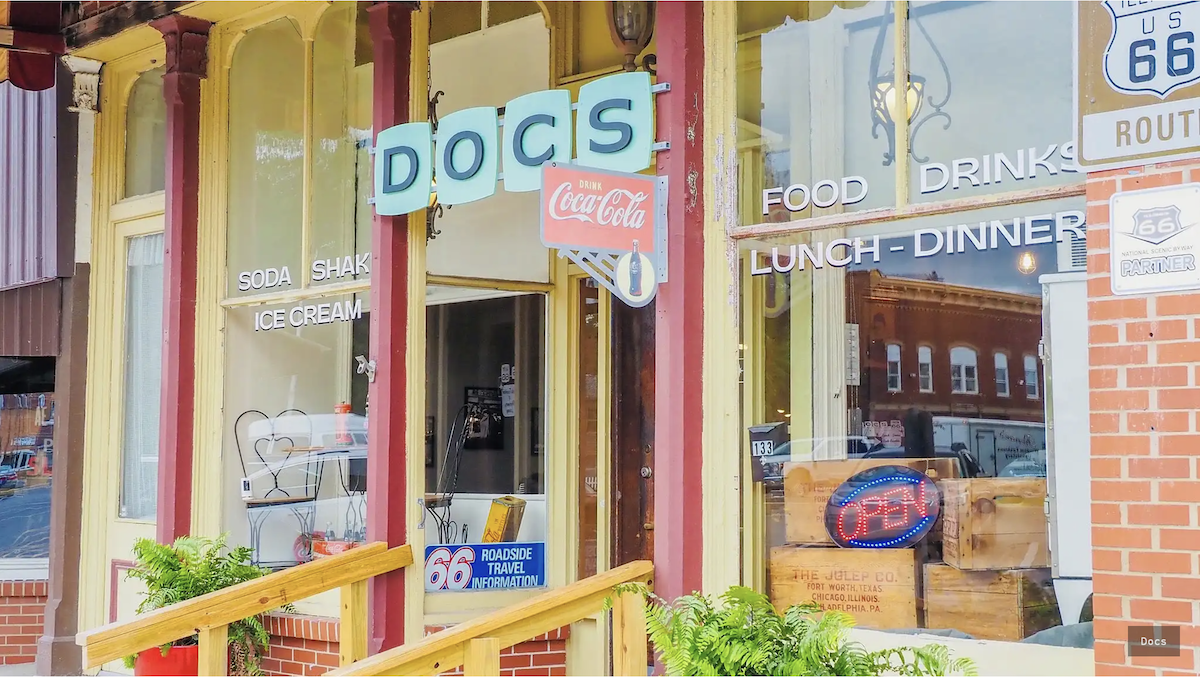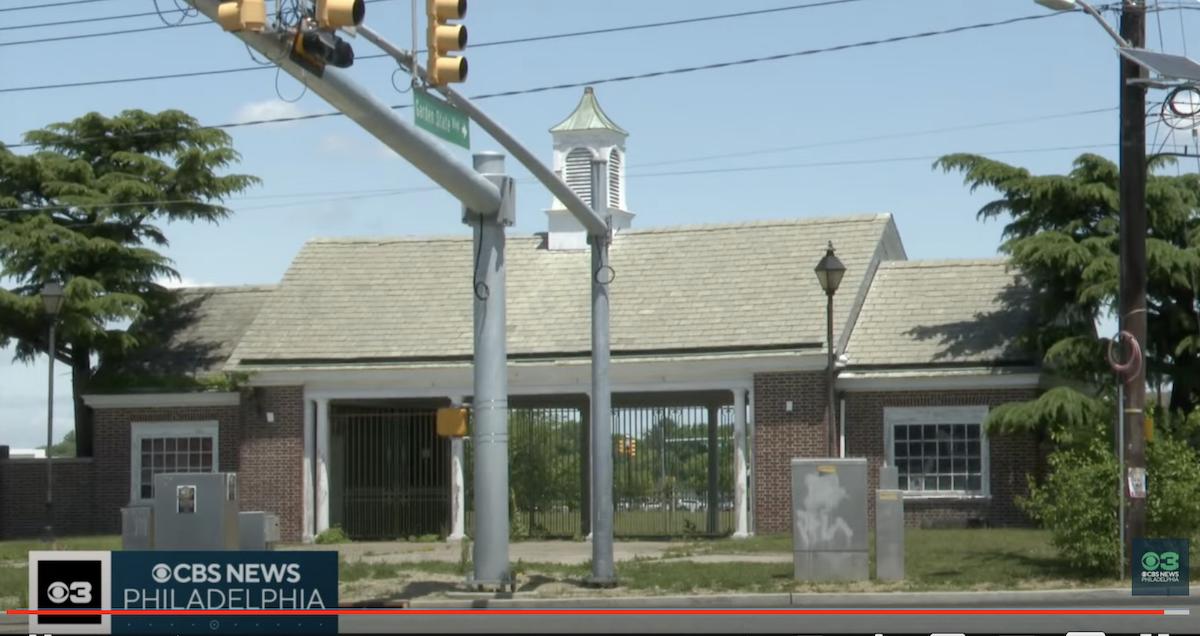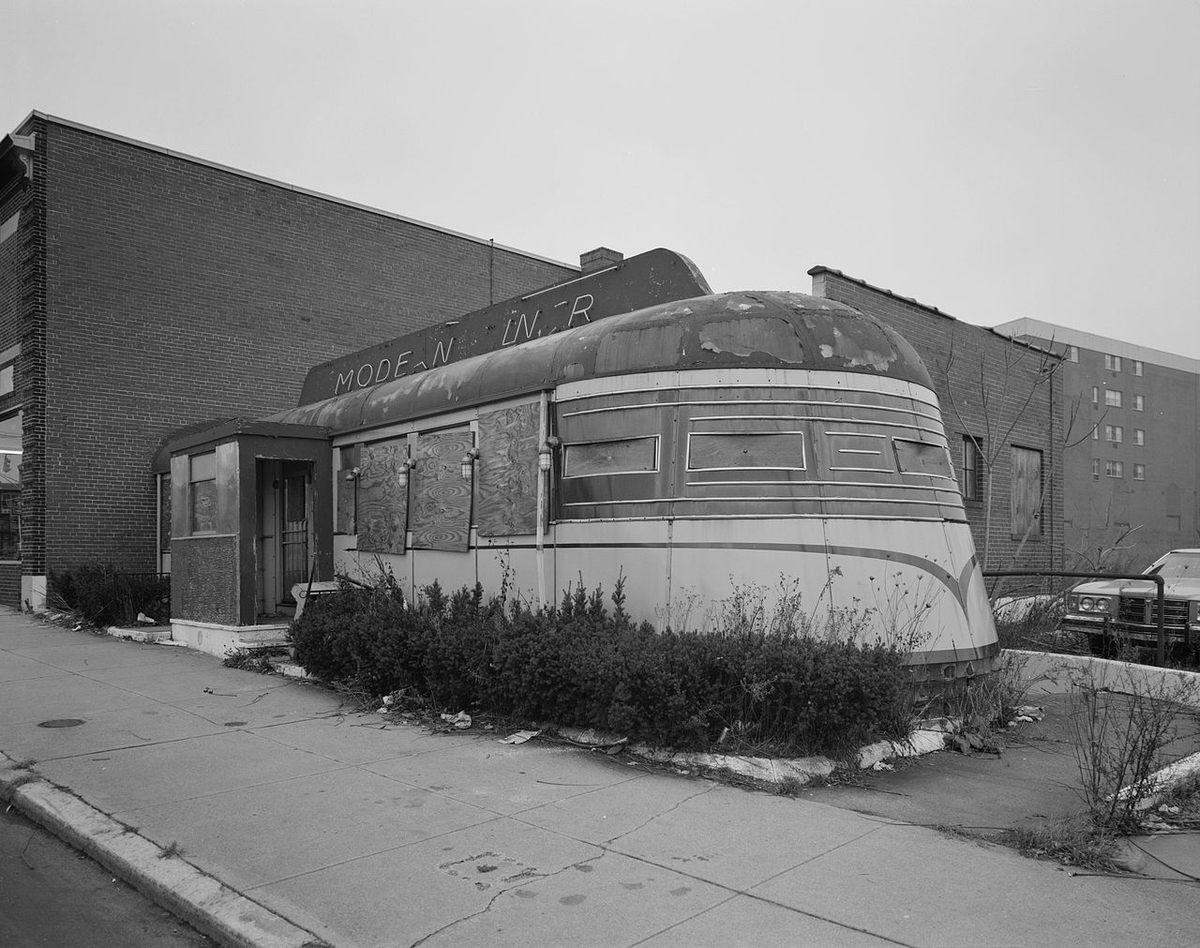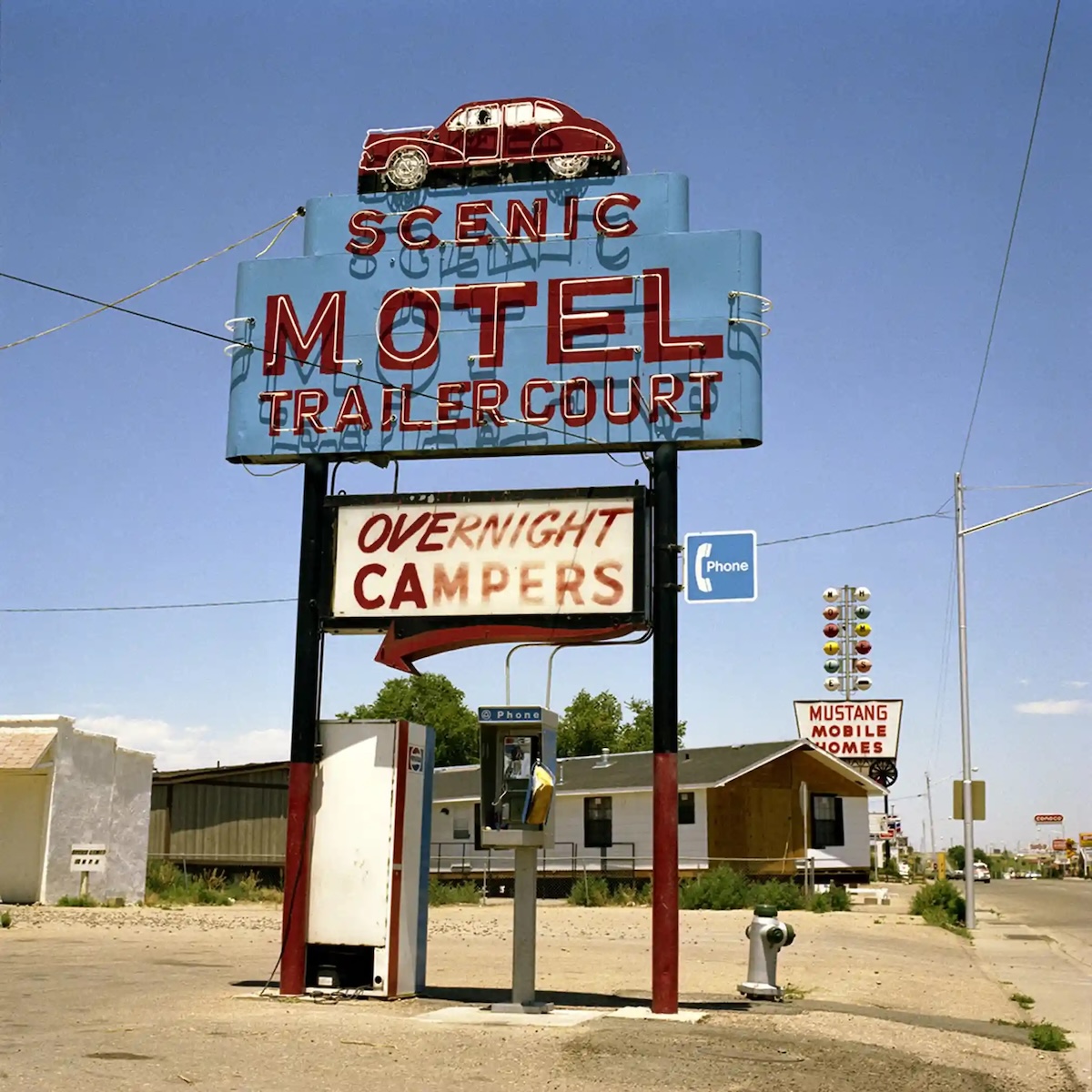Bank of America’s Newly Restored 1959 Palm Springs Financial Center Unveiled
Midcentury Modern Renovation Project to be honored by Palm Springs Modern Committee in the Fall
From the Palm Springs Tribune: Palm Springs, Calif – Bank of America has reopened its historical 1959 midcentury modern financial center at 588 S. Palm Canyon Drive in downtown Palm Springs following two years of extensive renovations for safety and to restore its unique architectural and design elements. Nearly 100 community leaders and clients joined bank employees for an official grand reopening celebration and tour of the upgrades and restoration.
“Bank of America was the first bank to open a branch in the low desert region back in 1929, located in Palm Springs, and that commitment to the community continues today with our investment to preserve this magnificent midcentury modern landmark for future generations,” said Bansree Parikh, Bank of America Inland Empire president. “What began as a brief three-month project to replace the roof turned into a three-year effort because we very quickly realized the need to make significant safety and seismic upgrades, energy efficient renovations and the opportunity to restore as many original architectural features as possible. This incredible effort couldn’t have happened without the support of our clients, the city and the community’s historic preservation leaders.”
Nashville family business closing after 75 years, neon sign to be preserved
From WKRN: NASHVILLE, Tenn. — After 75 years in Nashville, Friedman’s Surplus & Outdoors, a family-owned business, is closing its doors.
Friedman’s sells military surplus, camping and outdoor equipment, fishing tackle, ammunition, clothing and work wear.
They’ve had several locations in Music City since 1949 and have been in Hillsboro Village on 21st Avenue South since 1972. It’s the final Friedman’s location.
Supporting Legacy Businesses Along Route 66
Exterior of Docs Just Off 66 in Girard, Illinois. Docs
From savingplaces.org: Small, locally owned businesses are the heart and soul of Route 66. To recognize the value of the long-standing local businesses that contribute to the Route 66 experience and help make the preservation of Route 66 structures economically viable, the National Trust has been working to identify Route 66 legacy businesses since June of 2023 with the help of three research associates.
Recognizing the tremendous challenges facing many of these small businesses, the National Trust’s Preserve Route 66 Legacy Business Grant Fund’s inaugural round of funding is providing $171,890 in grants to 18 businesses located in all eight Route 66 states. Read more about these projects below. Route 66 businesses interested in the 2025 round of Preserve Route 66 Legacy Business grants can sign up for email reminders, and if you know of a business on Route 66 whose story you would like to tell, consider submitting it to the Share Your Route 66 Story campaign.
More than 1,000 people sign petition to preserve historic building in South Jersey
From CBS Philadelphia: In Cherry Hill, a building known as the Garden State Gatehouse was once a booming and nationally known thoroughbred racetrack that opened in 1942.
Retro Americana Is on the Menu at These 17 Diners
Modern Diner before it was purchased by Nick Demou and saved from demolition. Library of Congress
From Atlas Obscura: Like many great American hustlers, Walter Scott started young. It was 1857 in Providence, Rhode Island, and the newspaper business was booming. Scott was just 16, but he noticed that workers on the graveyard shift had few places to go. So he started slinging newspapers, candy, and later hot coffee during the wee hours.
By 1872, he’s expanded enough to get serious about the “late lunch” business. When the sun went down, he’d head to the headquarters of the Providence Journal in a jerry-rigged freight wagon with a canvas top, where he’d serve the beleaguered workers until a few hours before dawn. Before long, other “dining cart” operators began to copy Scott’s model. By the turn of the 20th century, these once-mobile operations began putting down permanent roots. By the post-World War II era, they were a staple of blue-collar America from coast to coast.
Today, there are some 7,000 diners scattered across the United States, along with countless other homages to the genre around the globe. Ultimately, a great diner is more about vibes than anything. Yes, you’re here for the food—which should be inexpensive, calorically dense, and preferably served with speed because we’ve all got to hit the road.
Roadside retro: Steve Fitch’s American motel signs – in pictures
Pueblo, Colorado, June 1980. Photograph: Steve Fitch
From The Guardian: Photographer Steve Fitch has captured motel signs across the US, showing a range of styles during different decades, displayed at a new exhibition at the Joseph Bellows Gallery in La Jolla, California. ‘What does matter is the idea of theme and variation, how a collection can be interesting because of the variety of specimens,’ Fitch said. ‘A collection of butterflies illustrates this idea, for example, and photography is such a great medium for collecting and comparing, which is what my motel sign project is ultimately all about’



